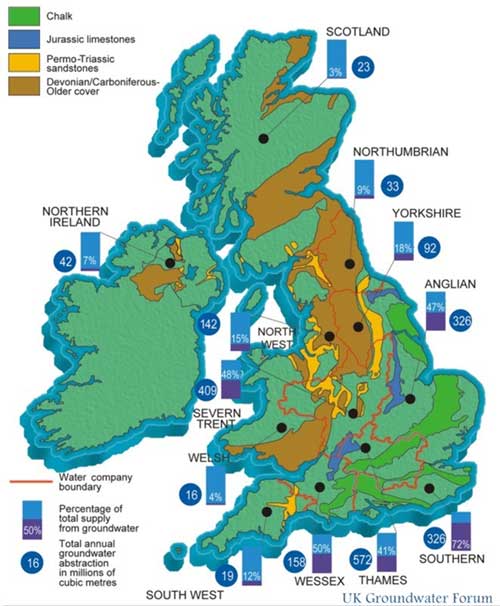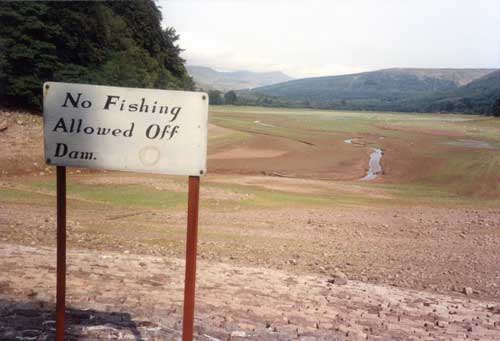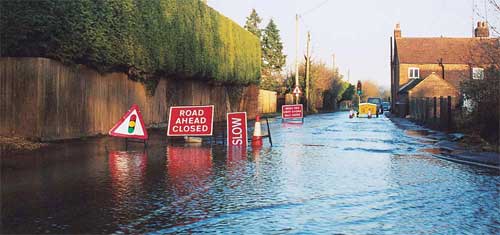Groundwater and climate change
In line with the warming of the global climate over the past 100 years, the climate of the UK has changed.
In central England, 14 of the 24 warmest years between 1659 and 2008 have occurred after 1988.
Predictions about how big the future change in our climate will be are uncertain but climate scientists are confident about the direction of the change – the Earth will become warmer.
In September 2009, the UK Met Office and UK Climate Impacts Programme provided a set of predictions for the climate of the UK over the coming century — the UKCP09 projections — which include an assessment of uncertainty.
Given a 'medium' estimate of greenhouse gas emissions for the 21st century, at a 50 per cent probability level the projections for UK climate change are:
- winter temperatures are predicted to increase by between 2 and 3 °C over most of the country
- summer temperatures are predicted to rise by 2.5 °C in northern Scotland and by just over 4 °C in southern England
- annual rainfall will remain about the same but winter rainfall will increase by 10 to 30% over most of the country
- summer rainfall will decrease by 40% in south-west England but by less further north
Demand for water
These points highlight that the impacts will be felt across the whole of the UK, but that the changes will be greatest in the south, where most of the people in the UK live, and where there is the greatest demand for water.
Most of the people living in south-east England are supplied with water that is stored underground as groundwater within water-bearing rocks called aquifers.
In the south-east of England up to 70 per cent of public water supply is derived by pumping groundwater from the Chalk aquifer.
The amount of groundwater that can be pumped out of aquifers is controlled by government regulatory bodies but ultimately limited by how rapidly it is replenished.
The rate at which groundwater is topped up depends on the balance between rainfall, evaporation of water from the land, transpiration from plants, runoff to rivers and recharge to groundwater.
As the UK climate becomes warmer, evaporation and transpiration by plants will increase and this is likely to result in a reduction in recharge and an increase in stress on our groundwater resources.
Rapid rate of change
Of course there are many uncertainties. We cannot know for sure how people will respond to the challenge of climate change and therefore how quickly the rate of emission of greenhouse gases into the atmosphere might change.
Current global climate model predictions are based on a range of emissions scenarios developed by the International Panel on Climate Change (IPCC) in the late 1990s.
These scenarios encapsulate different global economic futures and are inherently uncertain.
Unfortunately, according to a study published by Raupach et al., 2007 in the Proceedings of the National Academy of Sciences, since 2000, global emissions have increased even faster than the most fossil-fuel intensive of these scenarios.
Imperfect predictions

Predictions of change are also uncertain because computer models are used tosimulate the global climate and these are not, and never will be, perfect.
For example current global climate models do not simulate patterns of rainfall very well.
For this reason it is difficult to be confident about predictions of change in the magnitude and frequency of hydrological extremes – droughts and floods – at the river catchment scale.
More flooding
Climate models do, however, suggest with some degree of certainty that the hydrological cycle will intensify and so we can expect hotter drier summers with more severe droughts and warmer wetter winters with more severe floods.
During the winter of 2001 severe flooding affected large parts of south-east England and northern France.
These floods were ‘unusual’, because they were caused by groundwater issuing from beneath the land surface rather than heavy rainfall causing rivers to swell and break their banks.
They were exceptional because they lasted for many weeks in parts of southern England and for a number of months in parts of the Somme Valley in France.
Unlike surface water flood events driven by shorter duration intense rainfall, the 2001 groundwater floods were driven by a prolonged period of above average rainfall.
Precious water

The projections of change in the global climate from a range of climate models suggest that we should expect events such as the groundwater floods of 2001 or the drought of 1976 to become more common and more severe.
Longer droughts will not only place more stress on our water supply system but also on the aquatic environment.
There is no doubt that there is an urgent need to change our collective behaviour in order to mitigate the worst effects of climate change but it is also apparent that we will have to adapt to a changing climate and changing weather patterns.
All forms of water supply, including groundwater, will become more precious.
More information about BGS Groundwater science










